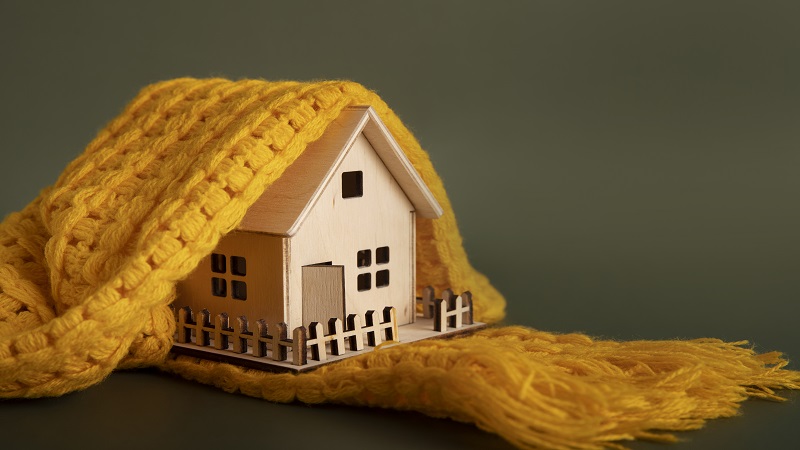When the chill of winter sets in, there’s nothing quite like the comfort of a warm and cozy home. Yet, for many households, keeping the cold at bay can be a constant battle, leading to soaring heating bills and discomfort.
The key to combating the cold lies in optimizing your home’s insulation. In this guide, we’ll explore practical steps to ensure your home stays snug and warm throughout the winter months.
Keep on reading!
Understanding the Importance of Home Insulation
Before delving into the specifics of insulation optimization, it’s crucial to grasp why insulation matters. Insulation acts as a barrier, preventing heat from escaping your home in the winter and entering in the summer.
By enhancing your insulation, you can maintain a comfortable indoor temperature year-round while reducing energy consumption and lowering utility bills.
Here are different ways you can optimize your home’s insulation.
- Assessing Your Current Insulation
The first step in optimizing your home’s insulation is to assess its current state. It involves conducting a thorough evaluation of your home’s thermal barriers to identify areas of improvement.
This process includes inspecting walls, floors, attics, doors, and windows for signs of wear, damage, or inadequate insulation. Look for gaps, cracks, or compressed insulation that may compromise its effectiveness. Additionally, consider performing a thermal imaging scan to pinpoint areas of heat loss or air infiltration.
- Types of Insulation Materials
Once you’ve identified areas for improvement, it’s time to explore the different insulation materials available. Fiberglass insulation is one of the most common types, consisting of tiny glass fibers that trap air to provide thermal resistance. Cellulose insulation, made from recycled paper or plant fibers, offers excellent eco-friendliness and fire resistance.
Foam insulation, such as spray foam or rigid foam boards, provides high R-values and effective moisture resistance. Reflective insulation, typically made of aluminum foil, reflects radiant heat away from the home, making it ideal for attics and roofs. Each type of insulation material has its own set of pros and cons, ranging from cost and environmental impact to installation complexity and performance in different climates.
- DIY Insulation Projects
DIY insulation projects empower homeowners to enhance their home’s energy efficiency while saving on labor costs. These projects typically include tasks such as sealing air leaks around windows and doors using weatherstripping or caulk, adding insulation to attics, walls, and floors, and installing insulation barriers in crawl spaces.
While some projects may require basic tools and skills, many DIY insulation tasks are accessible to beginners and can yield significant improvements in thermal comfort and energy savings when executed effectively.
- Professional Insulation Services
For larger or more complex insulation projects, it may be advisable to enlist the help of professional insulation contractors. Seek quotes from multiple providers and compare services to ensure you’re getting the best value for your money.
A reputable contractor can recommend the most effective insulation solutions for your home and ensure proper installation.
- Maximizing Energy Efficiency
In addition to optimizing insulation, there are other steps you can take to maximize energy efficiency in your home. Simple measures like getting good quality heating oil from romeosfuel.com and insulating it it with a shed can really help. Sealing ductwork helps prevent air leaks, ensuring that heated air reaches its intended destination without escaping.
Upgrading to energy-efficient windows and doors can further enhance insulation and minimize heat transfer. Other measures, such as using energy-efficient appliances and lighting, as well as practicing energy-saving habits like turning off lights when not in use, contribute to overall energy efficiency.
- Maintenance and Upkeep
Regular inspections should be conducted to check for signs of wear, tear, or damage, such as moisture buildup, mold growth, or pest infestations. Address any issues promptly to prevent further deterioration and maintain optimal insulation effectiveness. Additionally, consider scheduling professional maintenance services, such as insulation cleaning or sealing, to prolong the lifespan of your insulation materials.
- Eco-Friendly Insulation Solutions
For environmentally conscious homeowners, eco-friendly insulation solutions offer a sustainable alternative to traditional materials. These alternatives utilize recycled or renewable materials, reducing the carbon footprint associated with insulation production. Examples include insulation made from recycled denim, wool, or cellulose, which offer effective thermal performance while minimizing environmental impact. By opting for eco-friendly insulation, homeowners can contribute to resource conservation and reduce their reliance on non-renewable materials. Additionally, these insulation options often boast non-toxic compositions, promoting healthier indoor air quality.
The Bottom Line
Optimizing your home’s insulation is essential for maximizing warmth and comfort while minimizing energy consumption.
By understanding the importance of insulation, assessing your current setup, exploring different materials, and implementing DIY or professional upgrades, you can create a more energy-efficient and comfortable living environment for you and your family.
